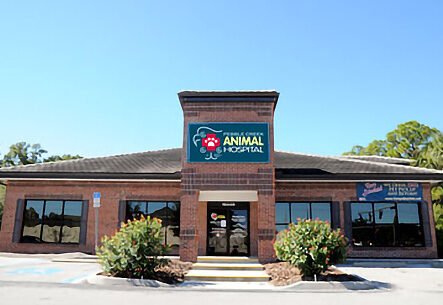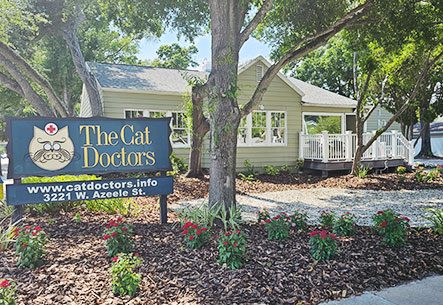Box Turtles
Box turtles are quiet but active, and you can spend hours observing their daily activities. Each has its own distinctive personality. An individual turtle has a unique shell pattern by which it can be identified. Because the shell is living tissue, it is unacceptable to carve or drill holes in the shell for identification or other reasons.
When handling your box turtle, support its body with both hands and position your fingers beneath its feet so it feels secure. Because turtles can transmit disease organisms such as Salmonella to people, it is advisable to wash your hands following handling and to clean the turtle’s enclosure away from food preparation areas.
Are Box Turtles Tame?
Turtles do recognize their owner, but signs of affection are difficult to determine. They rarely show aggression, but may occasionally bite and pinch a finger. If they are prodded, most retreat into their shell. Although relatively solitary animals, they can be housed together regardless of gender.
Is my turtle Male or Female?
Males are slightly larger and more colorful than females, and have thicker, longer tails. The plastron (bottom shell) is generally flat in females and concave in males. Some adult species can be sexed by eye color: males have bright red irises, females have light brown/dull red irises. Also, the vent position in males is outside of the upper shell, whereas in females the vent is closer to the body under the shell. Females are capable of laying fertile eggs months following a fall mating. Therefore, they should be provided an area for egg laying each spring/summer to prevent egg-binding.
What should I feed my Box Turtle?
The most important aspect of caring for your turtle is its diet. Box turtles are omnivorous, so they need both vegetable matter and animal protein in their diet. A grated salad of vitamin-rich vegetables and fruits such as sweet potatoes, broccoli, cantaloupe, berries and flowers (hibiscus, geraniums, nasturtiums) should be provided. Animal protein can be made available with pesticide-free earthworms, slugs, crickets (fed a high-quality, preferably organic diet), grasshoppers and chopped pinkie mice. Adding supplements, such as HEALx Sunshine Factor may be beneficial.
Hibernation
The availability of correct temperature ranges (warm for daytime, cool for night and cooler still for hibernation) is essential. Most box turtles will show a decreased appetite and activity in the fall; they should be allowed to hibernate only if healthy. Contact us for a health examination and specific hibernation information.
Activity
Turtles develop a regular schedule of sleeping, bathing, sunning and eating. If they aren’t housed outdoors, they need access to an area of soil in their enclosure they can dig. Digging helps keep their nails shortened. Box turtles also like to bury themselves in leaves, so these can be provided in a corner of the pen.
Free-ranging North American box turtles are considered to be terrestrial and have varying degrees of exposure to water for swimming; Asian box turtles like to spend more time in water. In captivity, a flat container with water provided to a depth of one-fourth to one-third of the turtle’s shell height should be available. The water must be kept scrupulously clean. Filtration systems are less effective than using a container that is easily cleaned.
Housing
- Must offer an approximate temperature around 65°F (18°C) (night) to 80°F (26°C) (day). To avoid potential burns, use a thermometer to monitor temperatures.
- May be indoors in a large 40-gallon or larger aquarium with land and water areas.
- May include 2-3 inches (5-8 cm) of sterile potting soil mixed with finely shredded orchid bark for land area.
- Must provide direct sun outdoors or full-spectrum lighting indoors on a timer (14-hour day, 10-hour night).
- Should include a basking place that is heated from above with a radiant heat source or sunlamp.
- Should include an enclosed sleeping/hiding area such as a three-sided box or a flower pot on its side.
Tips
- Take your new turtle to an experienced reptile veterinarian to check for potential signs of stress, dehydration or disease.
- Provide high-quality, pesticide-free vegetable and animal sources of food. Avoid feeding foods that contain few nutrients, such as iceberg lettuce.
- Feed young turtles every day; adults are fed less often and less quantities of animal protein as they grow older.
- Dog food is not recommended as part of a turtle’s diet, even if it is a low-protein, low-fat formula.
- If the turtle is housed outdoors, the fence must be recessed into the ground at least 2 inches, and visual barrier and protection from predators must be provided.
Avoid
- Direct contact with heat or light sources
- Sand, aquarium or pea gravel
- Ground corncobs, walnut shell, artificial grasses
- Cedar or other pressure-treated wood chips
- Freedom to run loose in the home
- Dogs, raccoons and other predators
- Temperature extremes
- Loud noises
- Pesticides
- Young children
Note: Always wash your hands after handling your turtle to reduce the potential for salmonellosis.
Courtesy of Zoological Education Network
Tampa, FL 33615 (View map)
Tampa, FL 33647 (View map)
Tampa, FL 33617 (View map)
Tampa, FL 33647 (View map)








